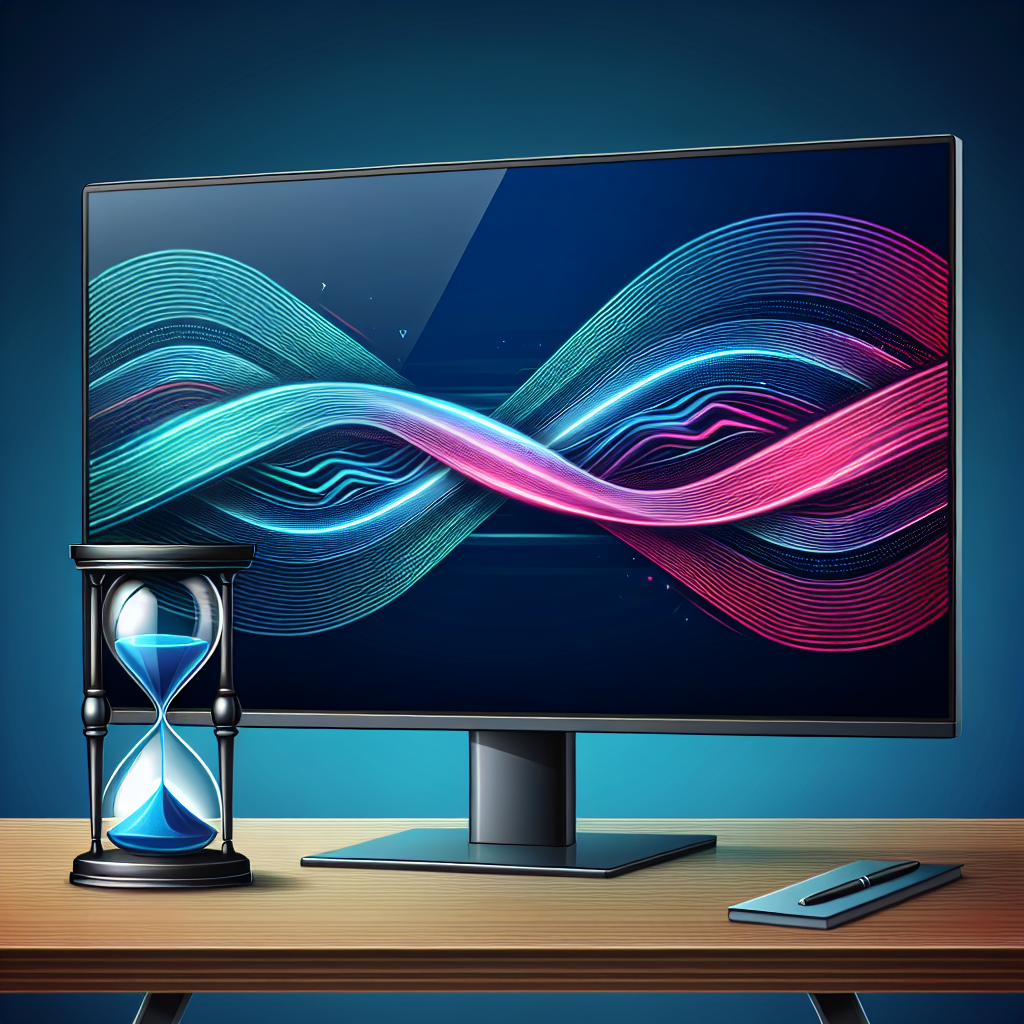When it comes to choosing a monitor, the response time is a crucial factor that can significantly affect your viewing experience. Plasma monitors, known for their vibrant colors and deep blacks, have unique response times that contribute to their performance. In this article, we will delve into what the response time of a plasma monitor is, how it compares with other display technologies, and its overall impact on user experience.
Understanding Response Time
Response time in monitors refers to the amount of time it takes for a single pixel to change from one color to another. This is usually measured in milliseconds (ms). The faster the response time, the smoother the motion is displayed on the screen. Slow response times can lead to blurring or ghosting, which can degrade the quality of the image.
Typical Response Times
| Display Technology | Response Time (ms) |
|---|---|
| Plasma Monitor | 0.001 – 0.01 ms |
| LCD Monitor | 1 – 5 ms |
| LED Monitor | 1 – 5 ms |
| OLED Monitor | 0.1 – 1 ms |
Response Time in Plasma Monitors
Plasma monitors generally have an impressive response time ranging between 0.001 to 0.01 milliseconds. This is significantly faster than most LCD or LED monitors, which typically range from 1 to 5 milliseconds. This ultra-fast response time makes plasma monitors an excellent choice for watching fast-paced videos or playing high-speed games.
The exceptional response time of plasma monitors is due to the way they operate. Plasma screens utilize small cells containing electrically charged ionized gases, or what we commonly call plasma. When an electric current passes through, these cells light up almost instantaneously, creating an image on the screen.
Advantages of Fast Response Time
- Reduced Motion Blur: Faster response times help in significantly minimizing motion blur, making the image clearer during fast-action scenes.
- Improved Gaming Experience: Gamers benefit from faster response times as it reduces lag, providing a more responsive and immersive experience.
- Smoother Video Playback: Ultra-fast response times ensure smoother transitions, improving the overall video playback quality.
Comparison with Other Display Technologies
To understand the true value of plasma monitors’ response times, it is essential to compare them with other display technologies like LCD, LED, and OLED.
LCD Monitors
LCD monitors have been popular for many years and offer response times typically ranging from 1 to 5 milliseconds. While they have improved over the years, they still can’t match the ultra-fast response times of plasma monitors.
LED Monitors
LED monitors, a subtype of LCD technology, also have response times similar to LCDs, ranging from 1 to 5 milliseconds. They are energy-efficient and offer great brightness levels, but their response times fall short compared to plasma displays.
OLED Monitors
OLED technology offers response times ranging from 0.1 to 1 millisecond, making them the closest competitor to plasma monitors in terms of speed. However, OLEDs are often more expensive and have different use-case scenarios.
Impact on User Experience
The response time of a monitor has a direct impact on user experience, especially in activities that involve fast motion, like gaming or watching action-packed movies.
For Gamers
Gamers need monitors with low response times to ensure minimal input lag and ghosting. Plasma monitors, with their near-instantaneous response times, provide a seamless gaming experience compared to most LCD and LED monitors.
For Video Playback
In video playback, especially in high-definition formats, faster response times ensure a smoother viewing experience. This is where plasma monitors excel, delivering clear and crisp images with negligible motion blur.
Everyday Use
Even for everyday computing tasks, faster response times can make a noticeable difference, contributing to a more enjoyable and efficient user experience. Text scrolling, web browsing, and even simple animations benefit from lower response times, making plasma monitors a worthwhile consideration.
Drawbacks to Consider
While plasma monitors offer incredible response times, there are some drawbacks to consider. These include weight, power consumption, and potential burn-in issues. Plasma screens are generally heavier and consume more power compared to LCD and LED options, factors that might influence your decision based on your specific needs.
Conclusion
Understanding the response time of plasma monitors helps in appreciating their unique benefits and limitations. While they offer ultra-fast response times that significantly enhance viewing experiences, it is essential to weigh these advantages against potential drawbacks like weight and power consumption. For gamers and movie enthusiasts, the almost instantaneous response times can provide unmatched performance, but other users might find alternative display technologies more suited to their needs.

